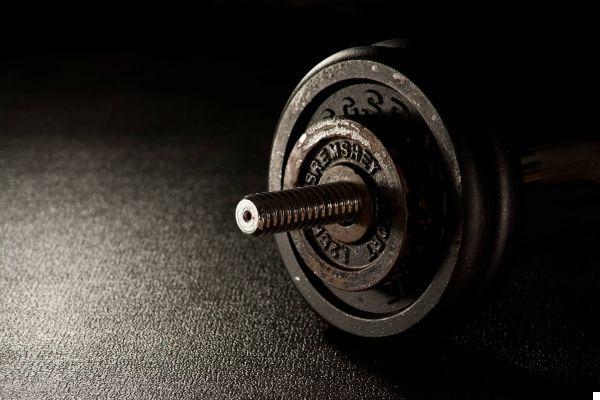Before introducing the Explosive Strength discourse, let's briefly mention the term "Muscle Strength". Muscle strength is the ability of our musculoskeletal system to face all those situations, even in everyday life, in which it is necessary to oppose or overcome external resistance.
Man increases his muscle strength from the first months of life to assume a standing position, then walk, jump and run.
Over the years, many scholars, including Zarciorskij, Vittori and others, have tried to specifically define muscle strength. Vittori cited “muscular strength can be defined as the capacity that the intimate components of muscular matter have to contract, in practice to shorten”; Zarciorskij cited “man's strength can be defined as his ability to overcome external resistance or to oppose with a muscular effort”.

The strength, depending on its intensity and duration over time, takes on different characteristics, thus we distinguish four types of strength:
1. Maximum or pure strength: when our neuromuscular system is found to express the highest force it is able to support (prevalence of the load at the expense of speed);
2. Maximum dynamic force: when there is the ability to overcome resistances with a high speed of contraction (prevalence of speed at the expense of the load);
3. Resistant force: the ability of the body to resist a load for a relatively long period of time.
4. Explosive strength: it is the ability of our neuromuscular system to express high gradients of force in the shortest possible time.
1. Explosive Strength and Training
The explosive force allows you to develop the power and the ability to "respond" more quickly to an action. To acquire it, according to some studies, it is necessary to train with loads and short series and plyometrics.
A training system with loads and short series is based on the improvement of nerve factors or the recruitment and synchronization of multiple muscle fibers during contraction. The work is based on a number of repetitions equal to 5-6 per series with loads not lower than 80% of 1 RM (RM corresponds to maximum repetition or the load that each of us is able to lift only once).

For this type of training it is recommended to follow the Bulgarian method (high-maximal intensity). It consists in alternating during a series of heavy loads and light loads with a movement performed as quickly as possible, eg: 80% x 7 40% x 7 max v. 80% x 7 40% x7 max v. with a recovery that goes from 2-3 minutes between one series and another. This training method can be maintained for a 4 week cycle.
- Plyometria
The term Plyometry derives from the Greek, it means “to increase the measure”. Plyometric techniques and executions were introduced by the American athlete Fred Wilt in 1975 describing the plyometric execution as "a movement characterized by the succession of a concentric contraction to an eccentric one can constitute a very useful tool in the development of some motor-conditional skills".
It is a technique of valid importance in the training of sports that require an increase in reactive, elastic and EXPLOSIVE strength. For plyometric training to be more successful it should be followed after a period of maximum strength training.

The aim is to improve the use of muscle strength as quickly as possible. Consequently, the more athletes have acquired the ability to generate their maximum strength the more they will be able to achieve excellent results through plyometric training.
Plyometric exercises vary according to the sport undertaken, so we will have plyometric workouts for the lower limbs of the body that will be performed by those who practice basketball, volleyball, running, football, etc, while we will have plyometric workouts for the upper limbs that will be carried out by those who practice golf, tennis, boxing, basketball, MMA.
Plyometric training will be performed gradually starting with low intensity techniques until reaching high intensity peaks. As the plyometric intensity varies, there will also be a variation in the volume and plyometric frequency. Don't ignore the importance of general warm-up before the plyometric training session.
In conclusion, to develop explosive strength it is necessary to have a good level of maximal strength combined with good plyometric preparation.


























